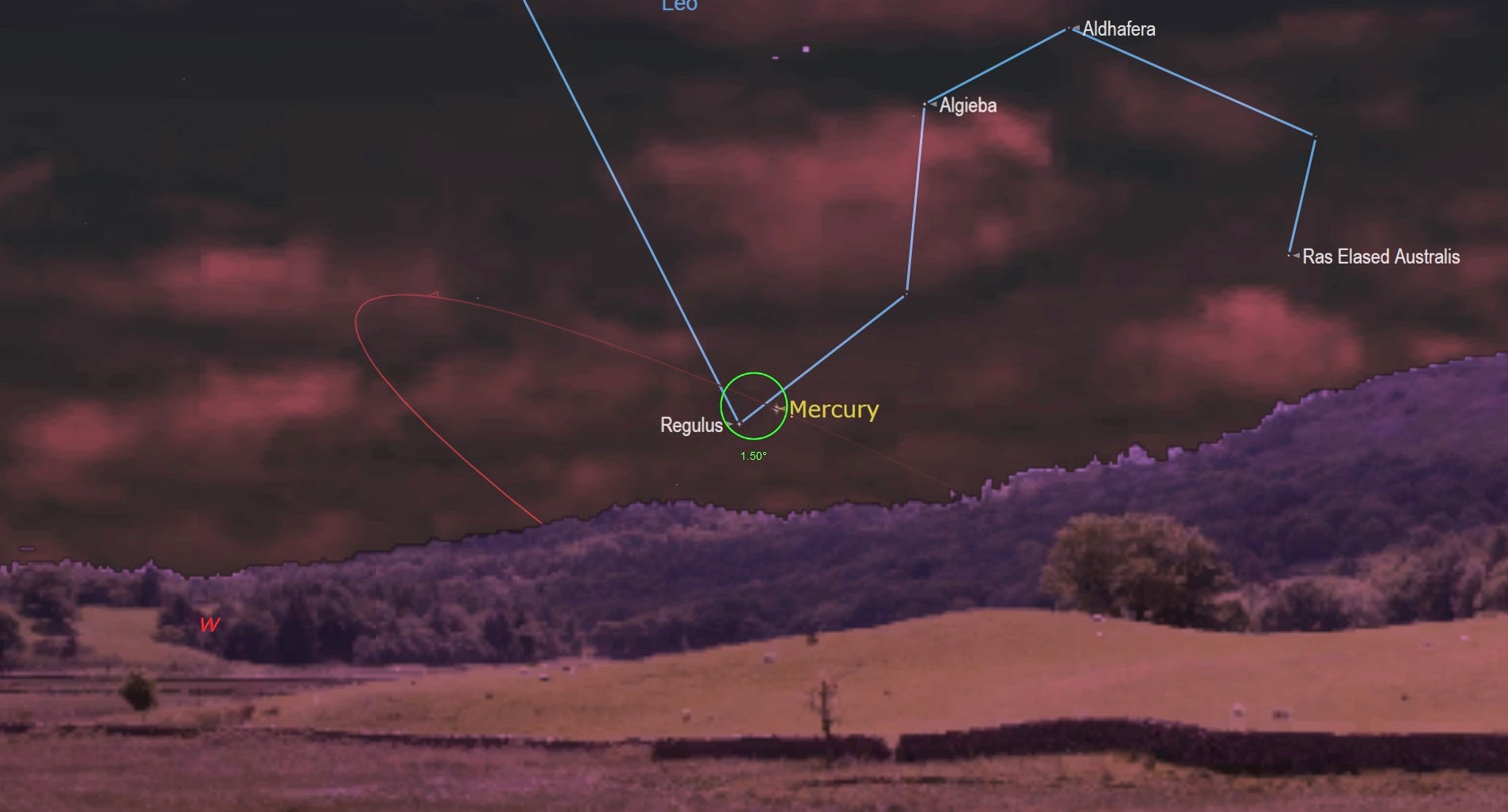See Mercury shine close to Leo's brightest star Regulus tonight
The pair will be close enough to view with a telescope.

Look to the west-northwestern sky shortly after sunset on Wednesday (Aug. 3) to catch a glimpse of Mercury shining close to Leo's "heart," its brightest star Regulus.
The pair will be close enough to view with a telescope, as illustrated by the green circle in the image above.
"After the sun has completely set, use your optics to seek out the five times brighter planet positioned a finger's width to the upper right (or 1 degree to the celestial north) of the star." writes astronomer Chris Vaughan of Astrogeo.ca, who prepares Space.com's monthly Night Sky calendar in cooperation with Simulation Curriculum.
Related: The brightest planets in August's night sky: How to see them (and when)
Note that if you are viewing the pair through a telescope, most will invert and/or mirror the view shown in the image above, according to Vaughan. Mercury will shine at magnitude -0.54 and Regulus at approximately 1.35 (On the magnitude scale used by astronomers, lower numbers signify brighter objects). For example, at its brightest, the planet Venus shines with a magnitude of about -4.6.)

Looking for a telescope for the next stargazing event? We recommend the Celestron Astro Fi 102 as the top pick in our best beginner's telescope guide.
Regulus lies within the constellation Leo. The blue-white "B" star is approximately 79 light-years away from Earth and ranked as the 21st brightest star in the sky, according to EarthSky. Regulus was named by 16th-century astronomer Nicolaus Copernicus, according to the Encyclopedia of Astronomy and Astrophysics, the star's name means "little king" in Latin.
On Wednesday (Aug. 3) Mercury will have appeared to have "hopped" over Regulus and shine a thumb's width to the upper left of the bright star, according to Vaughan.
Get the Space.com Newsletter
Breaking space news, the latest updates on rocket launches, skywatching events and more!
If you're looking for a telescope or binoculars to observe Regulus, our guides for the best binoculars deals and the best telescope deals now can help. Our best cameras for astrophotography and best lenses for astrophotography can also help you prepare to capture the next skywatching sight on your own.
Follow us on Twitter @Spacedotcom and Facebook.
Join our Space Forums to keep talking space on the latest missions, night sky and more! And if you have a news tip, correction or comment, let us know at: community@space.com.

Daisy Dobrijevic joined Space.com in February 2022 having previously worked for our sister publication All About Space magazine as a staff writer. Before joining us, Daisy completed an editorial internship with the BBC Sky at Night Magazine and worked at the National Space Centre in Leicester, U.K., where she enjoyed communicating space science to the public. In 2021, Daisy completed a PhD in plant physiology and also holds a Master's in Environmental Science, she is currently based in Nottingham, U.K. Daisy is passionate about all things space, with a penchant for solar activity and space weather. She has a strong interest in astrotourism and loves nothing more than a good northern lights chase!









